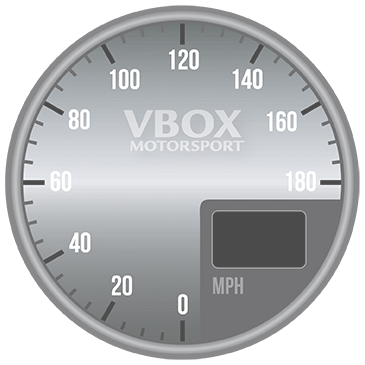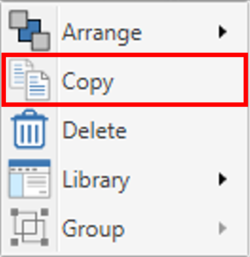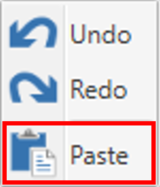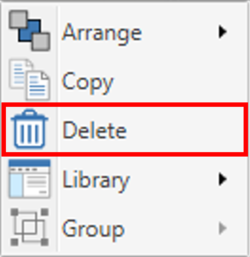HD2 - Gauge Element - Windows
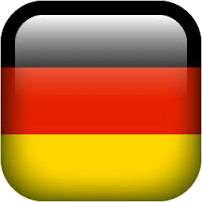
VBOX Video HD2 software comes with a supplied library of gauge elements. The user also has the option to create their own gauges using PNG, JPEG or BMP image files.
Adding a supplied gauge element
Open the gauge library by clicking the ‘Gauge’ icon from the top menu bar.
.png?revision=1)
A drop down menu will then appear, allowing a gauge to be selected from the library. Clicking on a chosen gauge will load it into the scene.
Note: Hovering over any of the gauge thumbnails will cause a larger preview of the gauge to appear.
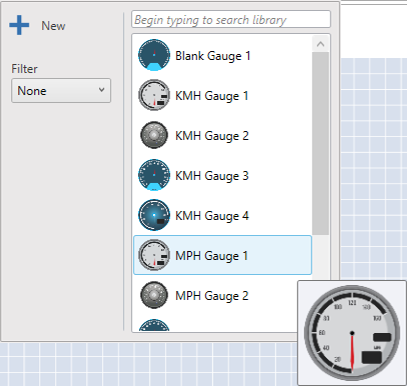
Selecting the 'Filter' drop down on the left enables you to filter the Bar Graphs shown between default and custom created.
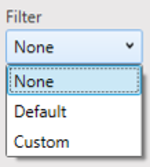
Once a gauge has been added to the scene, it can be clicked and dragged to the desired location.
Gauges within the library will have pre-defined settings. These settings can be changed as shown here.
Creating a new gauge
When creating a new gauge element, individual images for the gauge background and needle are required. A recommended size for a gauge image is 365 x 365 pixels – however do note that images can be resized within HD2 software.
Example images are shown below:
|
Gauge background image |
Gauge needle image |
To create a new gauge, click the ‘Gauge’ icon from the top menu bar.
.png?revision=1)
Within the drop down menu, selecting the ‘New’ option will add a new gauge element into the scene.
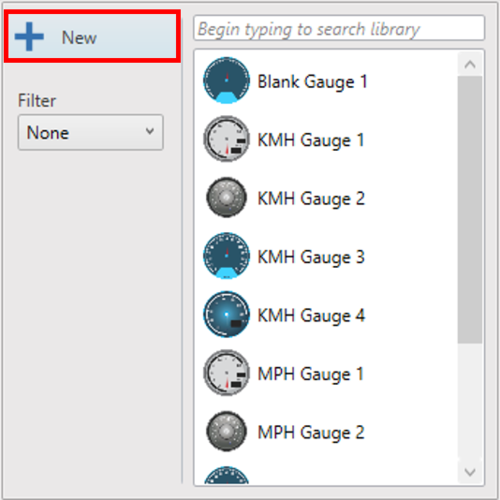
Double-click on the new gauge to load a background image.
.png?revision=1)
Double-click the gauge element again to load a needle image.
.png?revision=1)
Now both images have been loaded, the settings of the gauge can be defined, as shown below.
Gauge Settings
When an element is selected, its settings are shown in the right-hand panel.
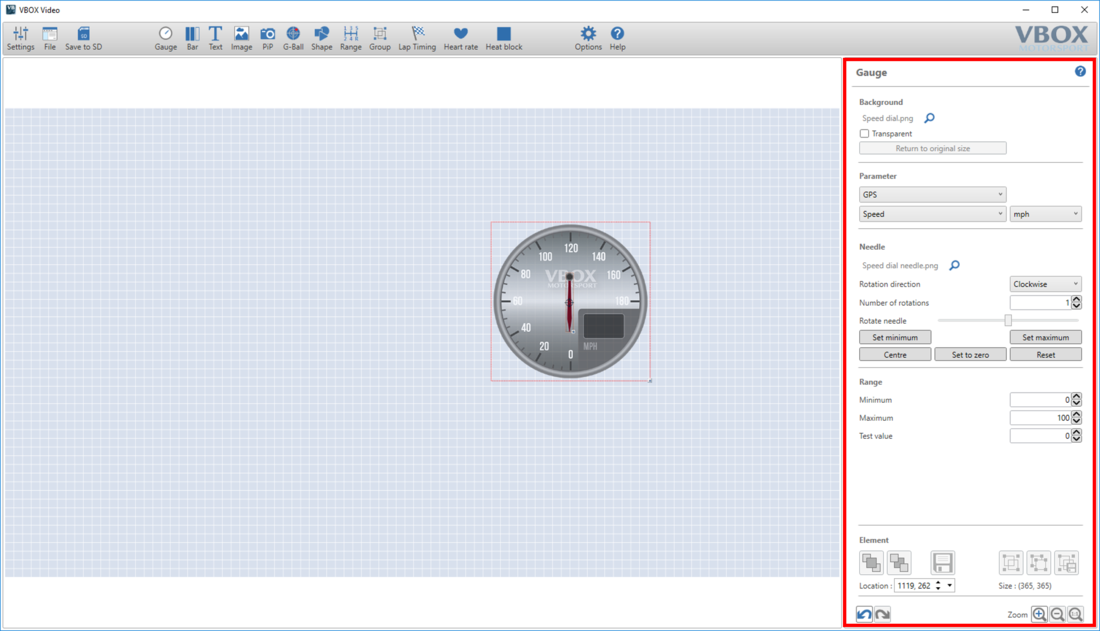
Defining a gauge parameter
The data set to display on the gauge can be changed using the two drop-down menus within the parameter section.
The first drop-down menu defines the source. Select either CAN, GPS, Heart rate monitor (if being used with a heart rate element), Maths Channels or OBD.
Note: CAN, Maths Channels and OBD options will only appear if they have been set up by the user.
.png?revision=1)
The second drop-down list defines the channel to be shown. In the example above, GPS Speed is set to display in km/h.
Changing the units
Within the parameter section, speed, acceleration or distance channels can be set to display in different units.
The options available are:
- Speed – km/h, mph, kts, m/s, ft/s
- Acceleration – g, m/s², ft/s²
- Distance – m, ft, km, mi, nmi
Needle Setup
Setting the crosshair
Set the needle rotation point by clicking and dragging the needle crosshair. The crosshair position can be fine-tuned using the keyboard arrow keys.
.png?revision=1)
Note: Depending on the needle image size, the red dot may need to sit slightly off centre.
Centring the needle image
Click the ‘Centre’ button to move the crosshair to the centre of the gauge background.
.png?revision=1)
Note: The needle position can be fine-tuned using the keyboard arrow keys.
Defining the needle range
Move the slider so the needle sits at the minimum position. Click ‘Set minimum’ to save.
.png?revision=1)
Move the slider so the needle shows the maximum position. Click ‘Set maximum’ to save.
.png?revision=1)
Note: Use the keyboard arrow keys to fine tune the needle position.
To clear all minimum and maximum position settings, press the ‘Reset’ button.
Setting needle direction
Needle direction can be set to clockwise or anti-clockwise. The default setting is clockwise, as shown in the example below.
.png?revision=1)
Setting the gauge range
The values set here must match the numbers on the gauge image. To test what will be shown on the gauge, enter a value into the ‘Test value’ box.
.png?revision=1)
Loading a new gauge background or needle image
Gauge images can be changed by clicking the search icon  next to the currently loaded image.
next to the currently loaded image.
.png?revision=1)
Gauge backgrounds can be made transparent by ticking the ‘Transparent’ option within the gauge background area.
Multiple Gauge Rotations
The number of 360° rotations between the maximum and minimum points can be increased using this setting.
This is useful when using a transparent background and a steering wheel image needle.
.png?revision=1)

